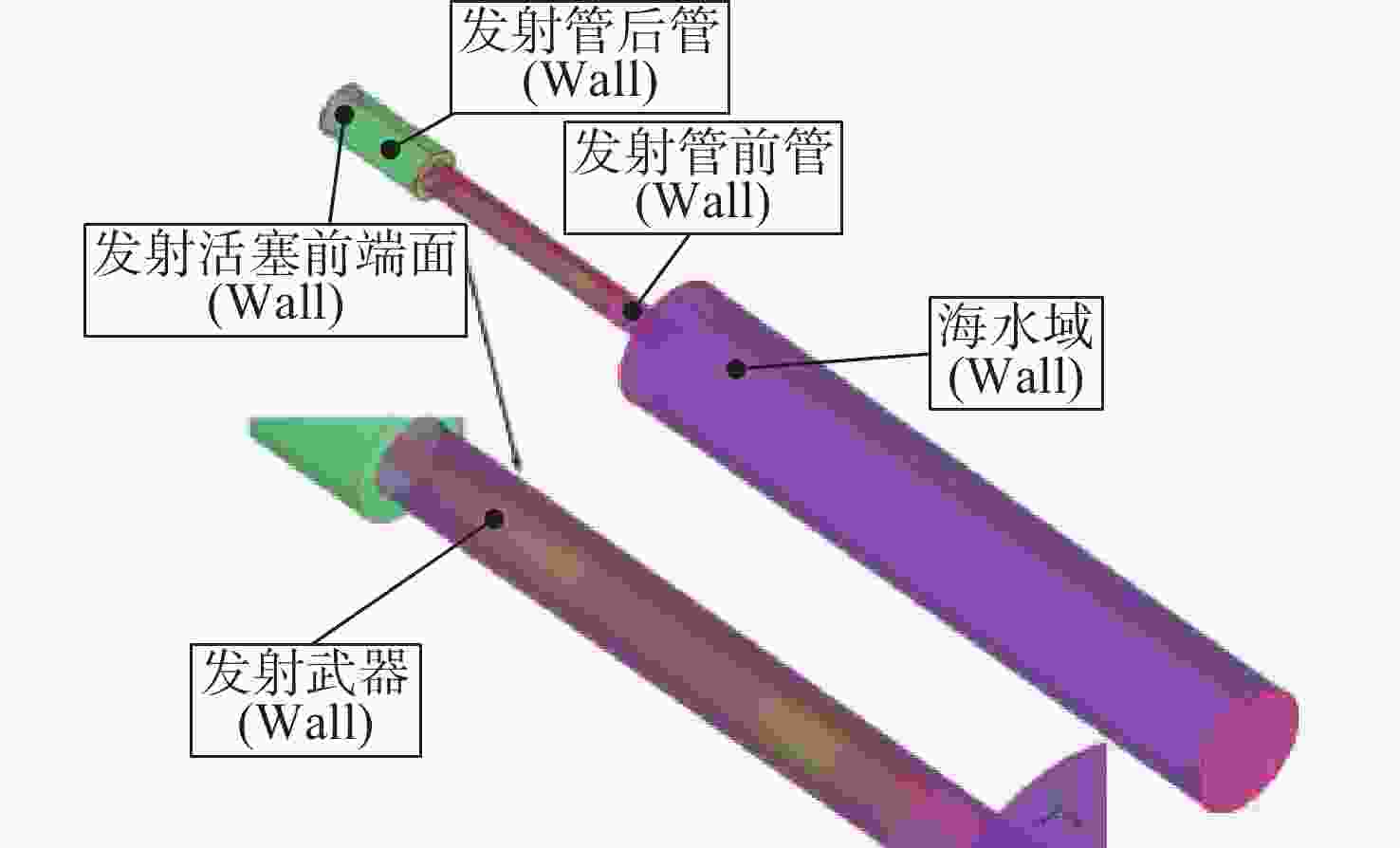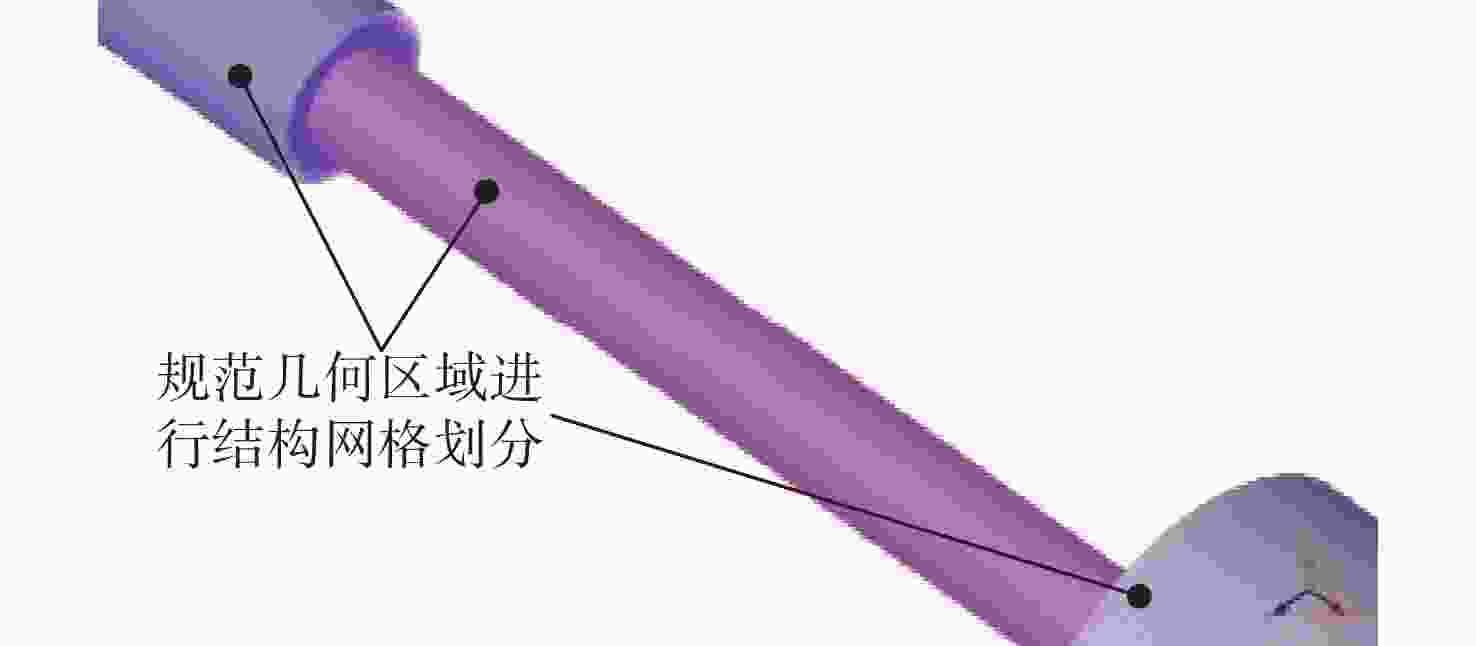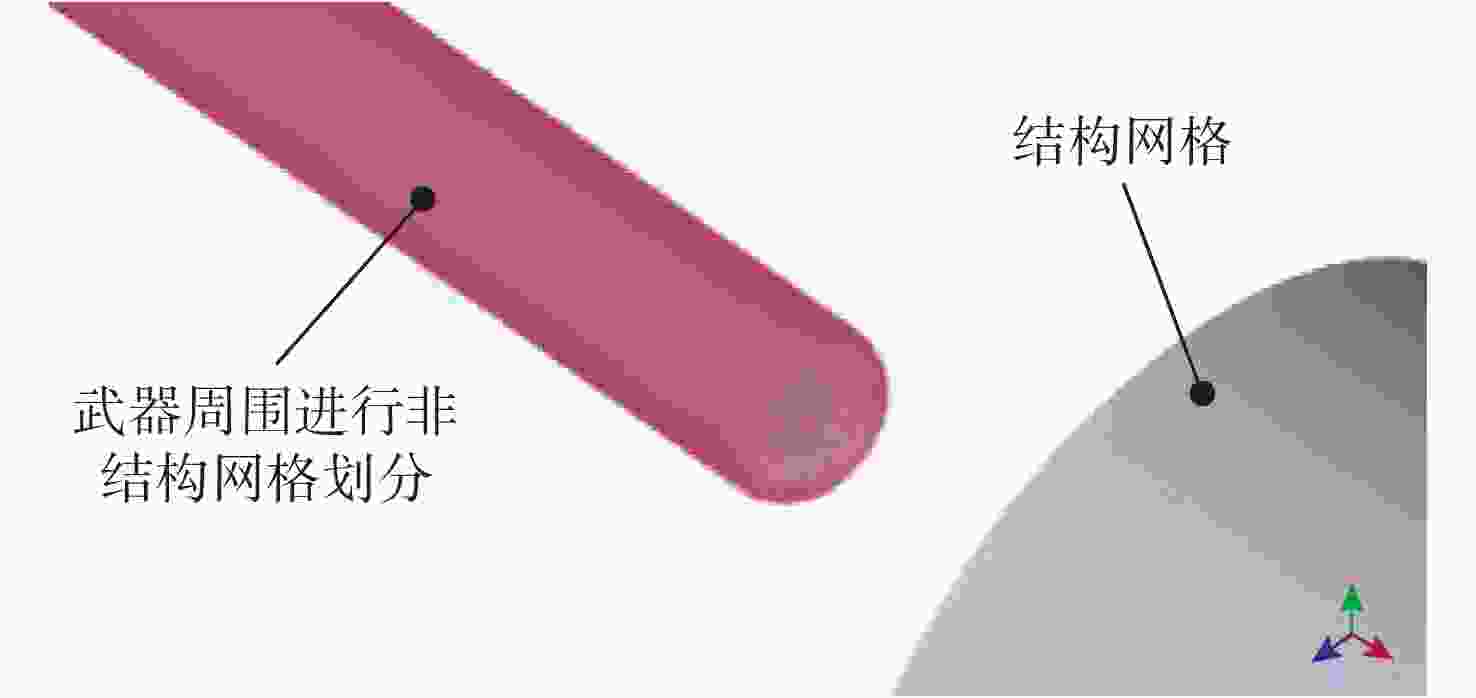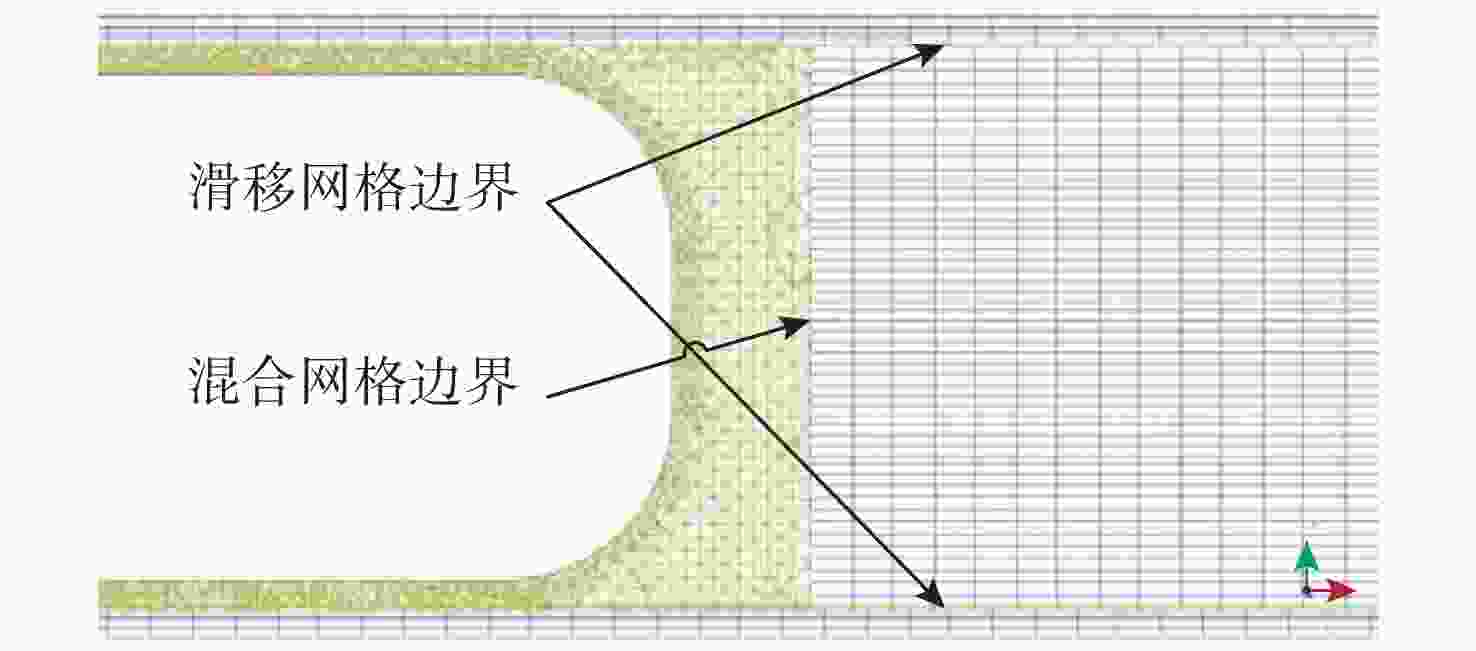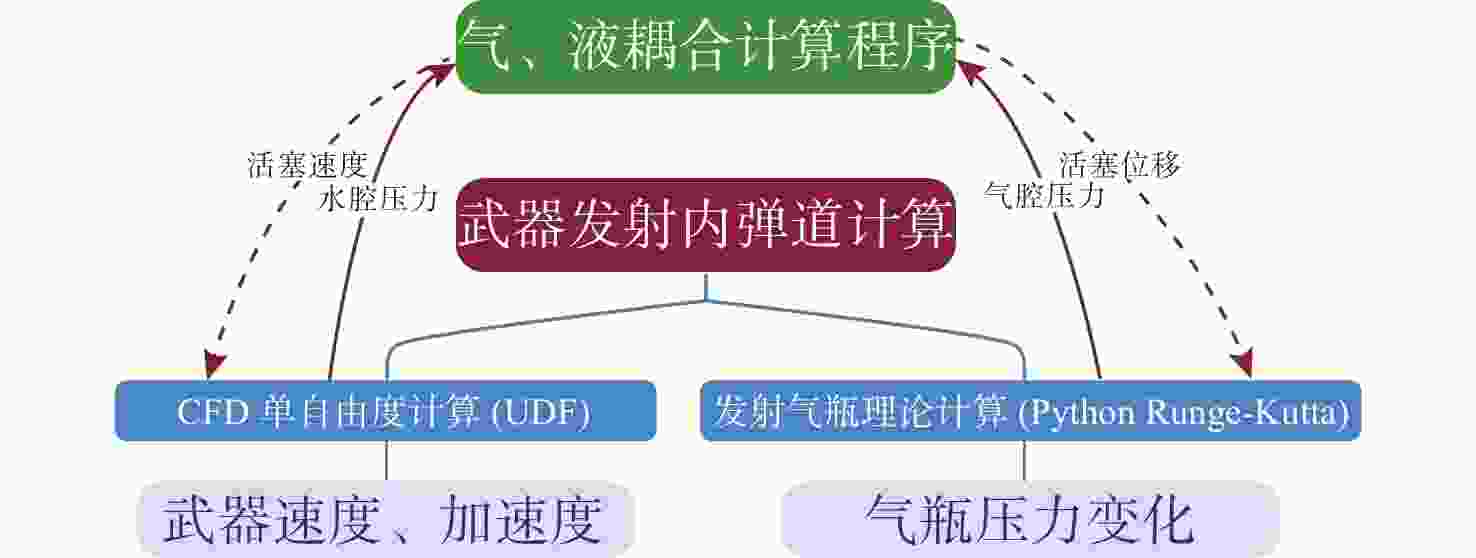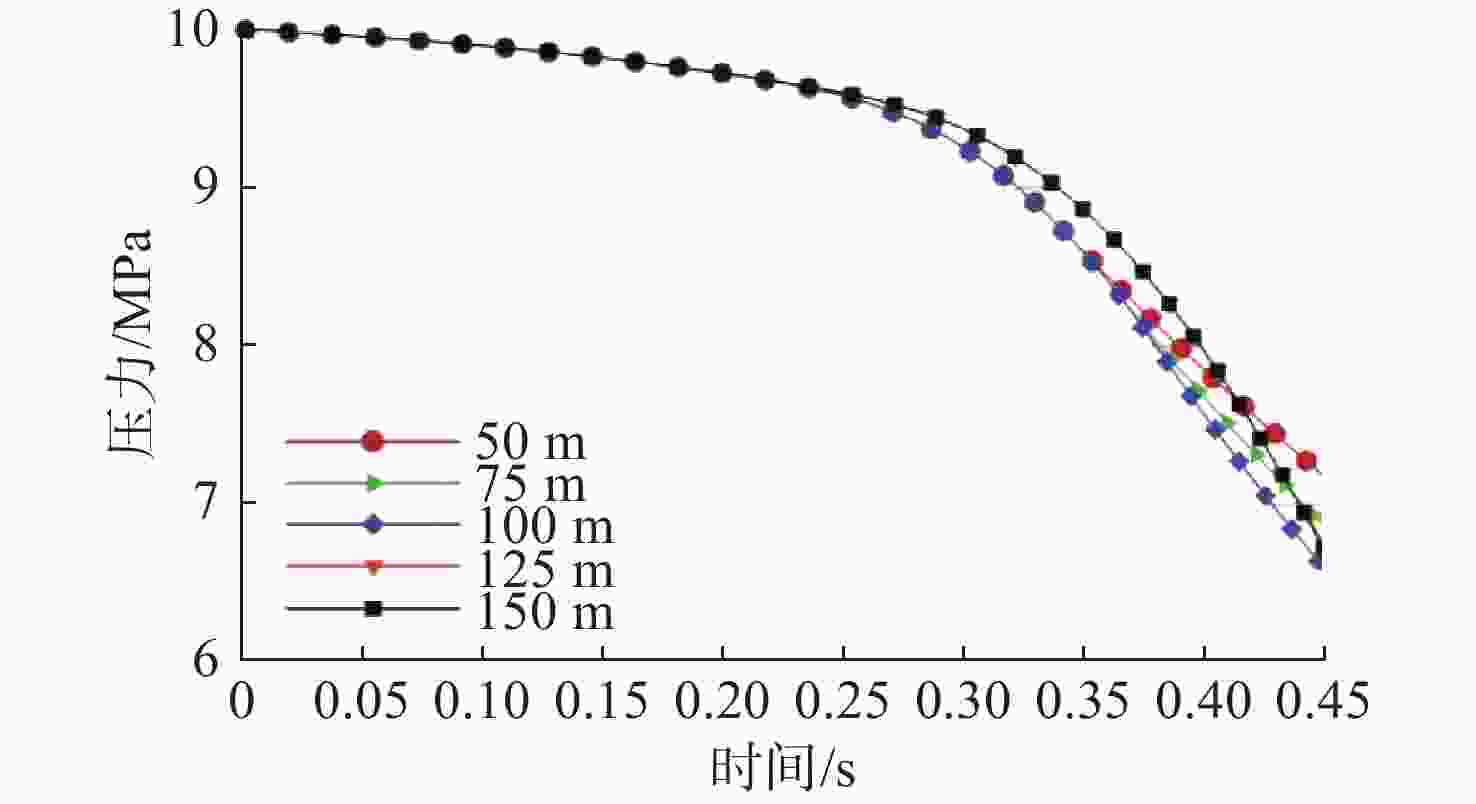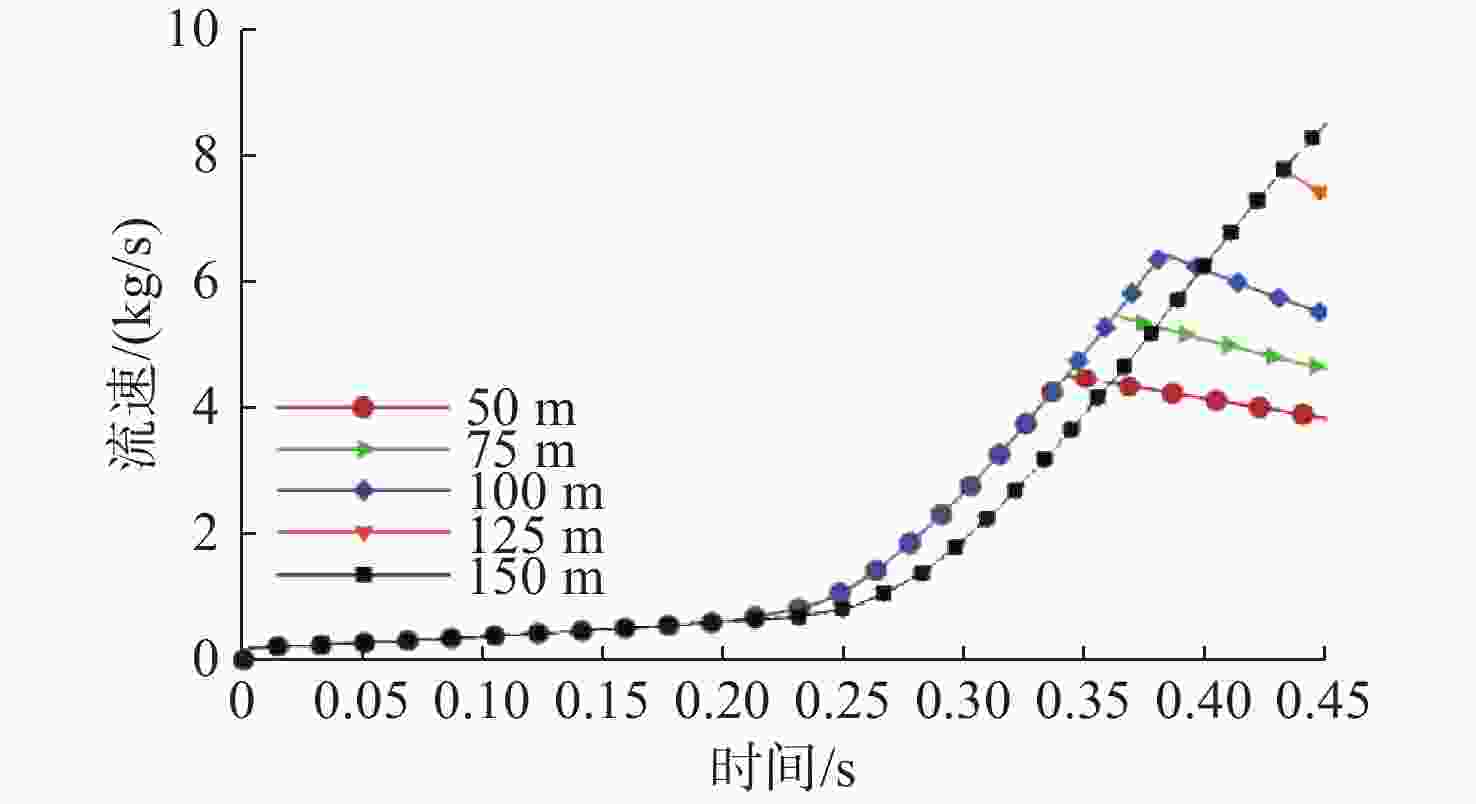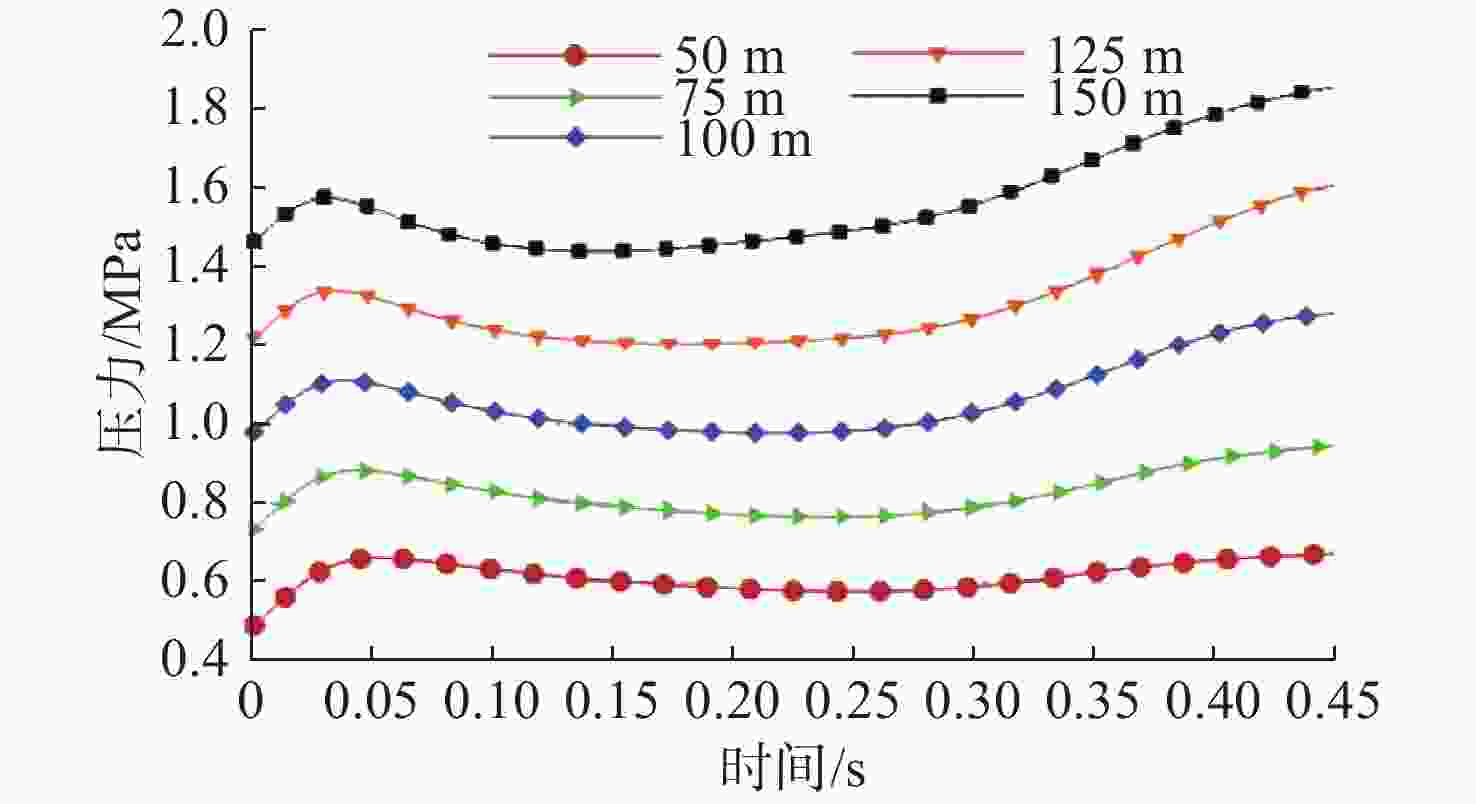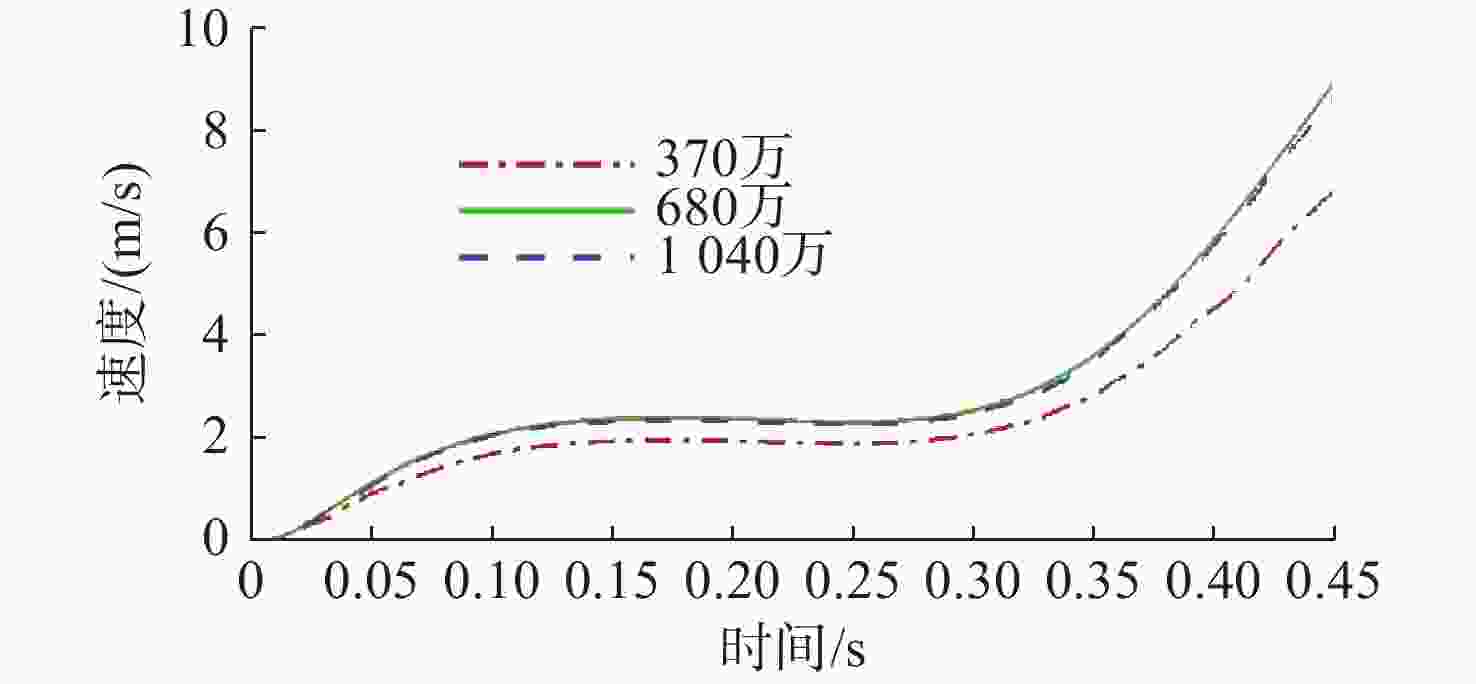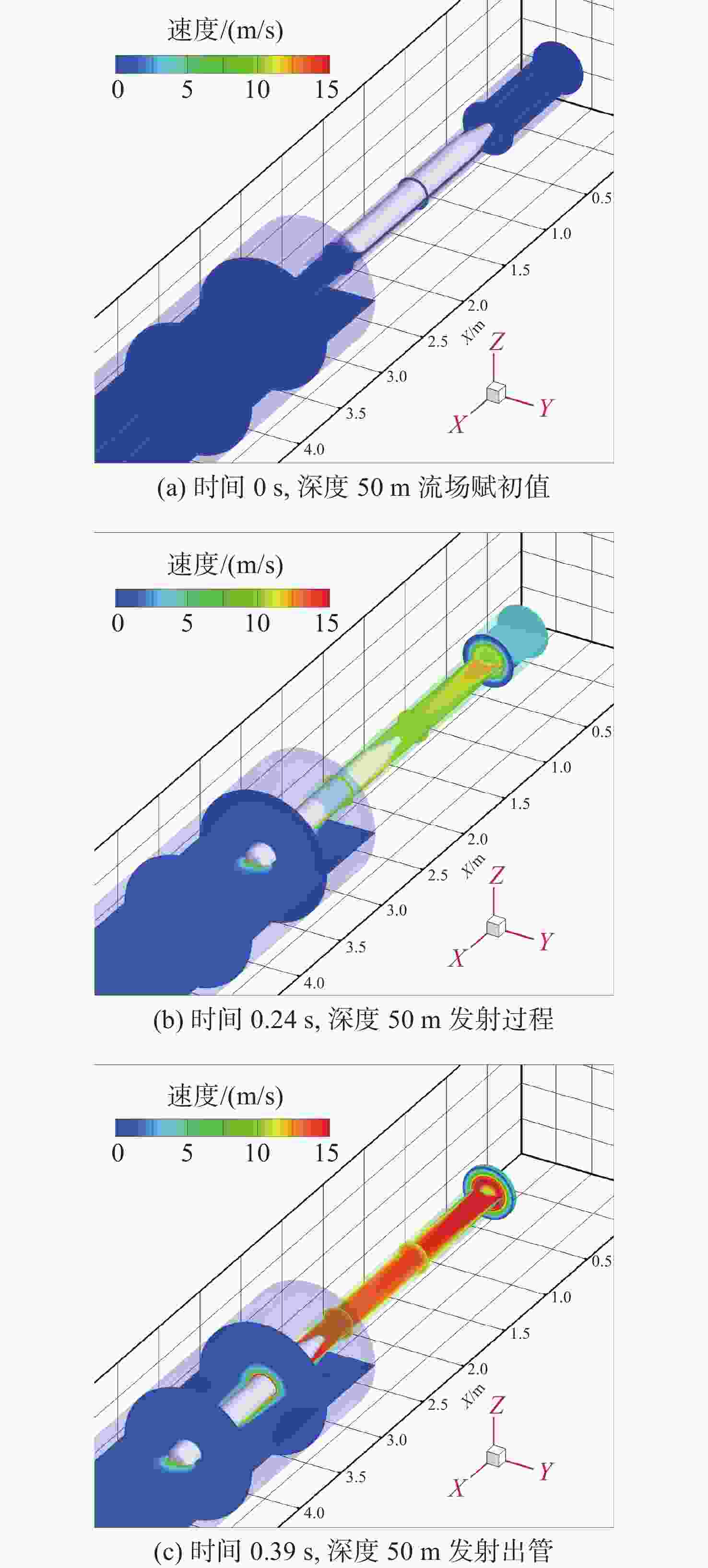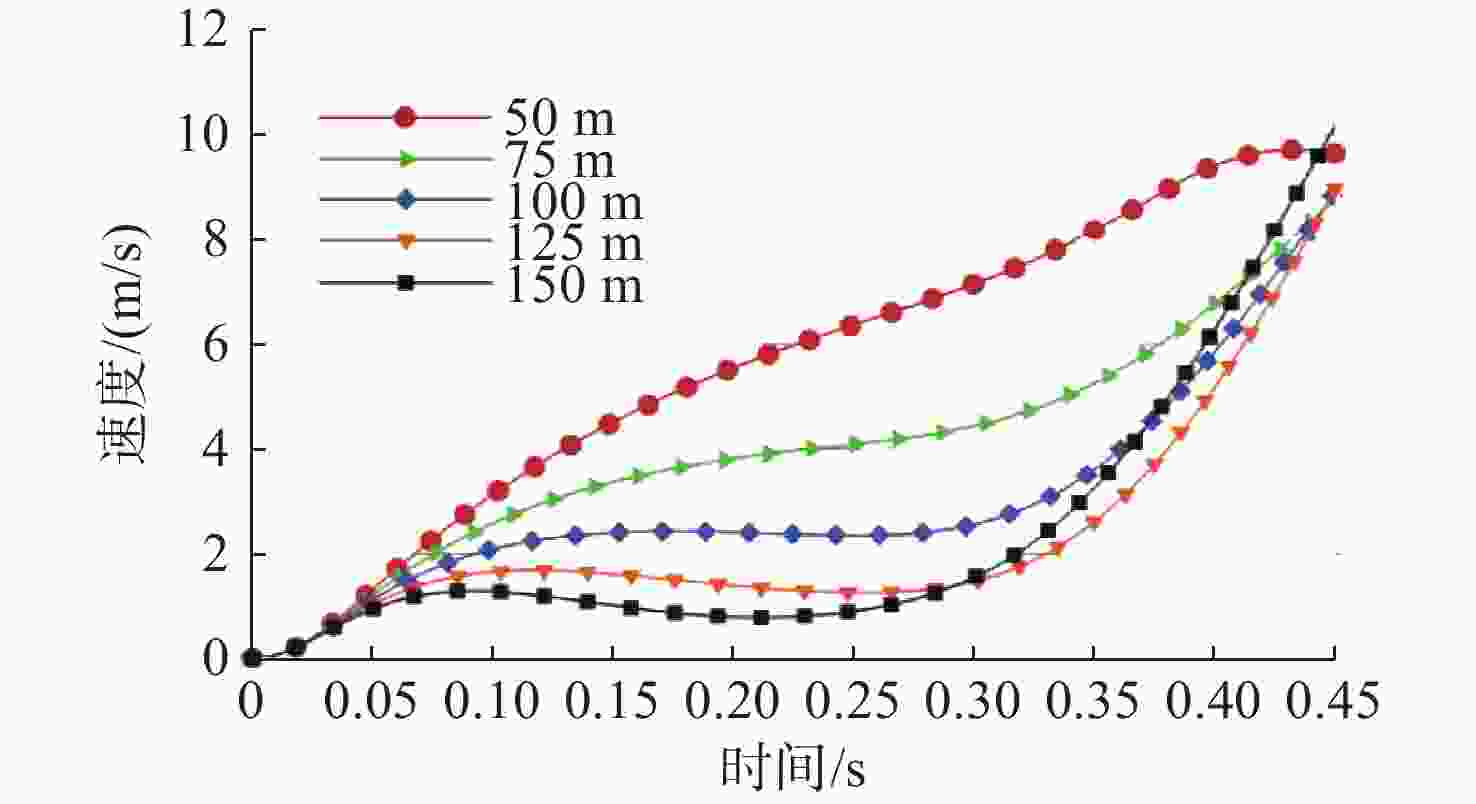A High-Precision Calculation Method for Internal Trajectory of Underwater Weapon Launch
-
摘要: 针对水下武器气动发射系统,提出了一种高精度内弹道计算方法。该方法将高精度理论推导和计算流体力学滑移技术相耦合, 对发射过程中的高压气体域运用四阶Runge-Kutta法进行求解, 对水域部分采用滑移网格进行单自由度武器发射仿真, 从而实现对内弹道的高精度计算, 可弥补理论计算误差偏大和流体仿真成本高的缺陷。对比试验数据可知, 通过该方法得到的武器出管速度平均误差为5.6%, 发射气瓶截止压力平均误差为4.0%,证明了该方法的准确性。
-
关键词:
- 水下武器; 计算流体力学 /
- 内弹道 /
- 气动发射系统
Abstract: A high-precision calculation method for internal trajectory was proposed for the pneumatic launch system of underwater weapons. The method combined high-precision theoretical derivation with computational fluid mechanics slip technique and used the fourth-order Runge-Kutta method to solve the high-pressure gas domain during the launch process. The sliding grid was used to simulate the single degree of freedom weapon launch in the water area, so as to realize the high-precision calculation of internal trajectory, which could make up for the defects of large theoretical calculation error and high cost of fluid simulation. Through comparison with the test data, it can be seen that the average error of the discharge velocity of the weapon and the average error of the cutoff pressure of the posterior cavity obtained by this method are 5.6% and 4.0%, which proves the accuracy of this method. -
表 1 计算结果与试验对比
Table 1. Comparison between calculation results and experiments
发射深度/m 发射指标 理论-流体耦
合计算值试验值 误差/% 50 截止气压/MPa 7.15 6.8 5.1 武器速度/(m/s) 9.65 10.0 3.5 75 截止气压/MPa 6.83 6.7 1.9 武器速度/(m/s) 8.78 8.3 5.8 100 截止气压/MPa 6.56 6.2 5.8 武器速度/(m/s) 8.96 8.5 5.4 125 截止气压/MPa 6.70 6.5 3.1 武器速度/(m/s) 9.04 8.6 3.5 150 截止气压/MPa 6.66 6.4 4.1 武器速度/(m/s) 10.23 9.7 5.5 -
[1] SHI Y, REN J Y, GAO S, et al. Simulation research on the outlet cavity features in the underwater launching process[J]. Ocean engineering, 2023, 267(1): 1-14. [2] 王树宗, 练永庆, 陈一雕. 气动式水下武器发射装置内弹道数学模型[J]. 弹道学报, 2003(1): 21-26. doi: 10.3969/j.issn.1004-499X.2003.01.005WANG S Z, LIAN Y Q, CHEN Y D. The mathemaitc model of the underwater compressed-air launcher[J]. Journal of Ballistics, 2003(1): 21-26. doi: 10.3969/j.issn.1004-499X.2003.01.005 [3] 李忠杰, 王树宗, 练永庆, 等. 气动式水下发射装置的可调节发射阀仿真研究[J]. 系统仿真学报, 2005(12): 3074-3075, 3080. doi: 10.3969/j.issn.1004-731X.2005.12.061LI Z J, WANG S Z, LIAN Y Q, et al. Simulation on adjustable discharge valve of underwater compressed-air launcher[J]. Journal of System Simulation, 2005(12): 3074-3075, 3080. doi: 10.3969/j.issn.1004-731X.2005.12.061 [4] 胡柏顺, 穆连运, 赵祚德. 潜艇水压平衡式发射装置内弹道仿真建模[J]. 舰船科学技术, 2011, 33(7): 90-93. doi: 10.3404/j.issn.1672-7649.2011.07.022HU B S, MU L Y, ZHAO Z D. Simulation and model of submarine hydraulic and balanceable launching equipment inside trajectory[J]. Ship Science and Technology, 2011, 33(7): 90-93. doi: 10.3404/j.issn.1672-7649.2011.07.022 [5] DEGTIAR V G, PEGOV V I, MOSHKIN I Y, et al. Mathematical modeling of the processes of heat and mass transfer of hot gas jets with fluid during underwater rocket launches[J]. High Temperature, 2019, 57(5): 707-711. doi: 10.1134/S0018151X19050031 [6] 高山, 施瑶, 潘光, 等. 水下发射航行体尾涡不稳定性分析[J]. 力学学报, 2022, 54(9): 2435-2445. doi: 10.6052/0459-1879-22-245GAO S, SHI Y, PAN G, et al. Study on the wake vortex instability of the projectile launched underwater[J]. Chinese Journal of Theoretical and Applied Mechanics, 2022, 54(9): 2435-2445. doi: 10.6052/0459-1879-22-245 [7] 刘元清, 张晨星, 陈香言, 等. 水下航行器-发射筒间隙流动仿真[J]. 水下无人系统学报, 2022, 30(4): 450-456. doi: 10.11993/j.issn.2096-3920.202109013LIU Y Q, ZHANG C X, CHEN X Y, et al. Simulation of gap flow of an underwater vehicle-launch tube[J]. Journal of Unmanned Undersea Systems, 2022, 30(4): 450-456. doi: 10.11993/j.issn.2096-3920.202109013 -





 下载:
下载:
